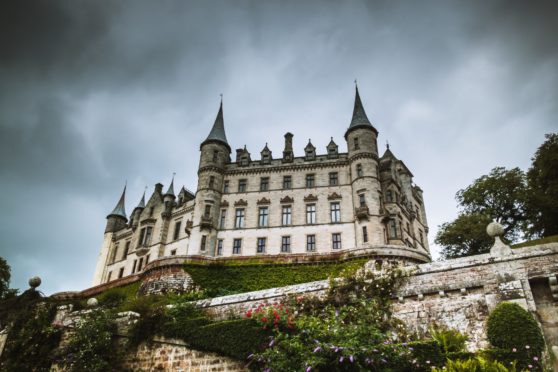
The north of Scotland is dotted with castles, but Caithness and Sutherland boast some of the most magnificent.
If you follow the A9 north of Inverness, you will be treated to one of the most picturesque routes in Scotland. Hugging the coast, you pass countless beautiful landmarks – perhaps none more so than the decadent Dunrobin Castle.
It resembles an intricate French château, with towering spires and manicured gardens.
Dunrobin is one of our oldest continuously inhabited houses – home to the Earls and then Dukes of Sutherland from the 13th Century and Scott Morrison has the enviable role of managing it.
“Dunrobin Castle is the most northerly of Scotland’s great houses,” he says. “It’s currently home to the 25th Earl of Sutherland.
“Visitors can look around a number of rooms before walking around the formal gardens. In summer you can enjoy falconry displays and Dunrobin Museum.”
The castle boasts 189 rooms, each decorated with the decadence of Versailles, blended with a Scottish style. Heavy velvet curtains shadow the windows, the walls are adorned with gold-framed paintings, and gilt accents are found at every turn, but the tartan carpets, wood-panelled rooms and decorative antlers are unmistakably Scottish.
Continue north, and you’ll find Castle Sinclair Girnigoe. Perched on a cliff just north of Wick, commanding a dramatic view of the North Sea, the castle holds a great deal of intrigue and history.
Lord Malcolm Sinclair, 20th Earl of Caithness is head of Clan Sinclair.
“Sinclair Girnigoe is the only castle in Scotland to be listed by the World Monument Fund,” he says. “This unique ruin is spectacularly situated on a peninsula overlooking Sinclair Bay with cliffs on three sides and guarded by a moat on the landward side.
“Following a conservation programme, it is open to the public throughout the year and there are interpretation panels explaining the castle and area. One can see how it was adapted from a Norse fortalice into a major defensive castle and home of the Earls of Caithness in the mid-15th Century.
“It was here the charter was granted to Jan de Groot to run a ferry to Orkney from what is now John O’Groats.”
Finally, perhaps one of the area’s most famous destinations, is the Castle of Mey. Standing at the very precipice of Britain, it is the most northerly inhabited castle in Scotland – it’s most notable previous resident being Queen Elizabeth, The Queen Mother.
Visitors can explore many rooms, including the Queen Mother’s sitting room. From the collection of Absolutely Fabulous videos by the television, to the bottle of Dubonnet on the drinks trolley, it remains largely untouched.
Whether you want to dive into the area’s history, or you just like some beautiful architecture, visitors to the North are spoiled for choice when it comes to castles.

Enjoy the convenience of having The Sunday Post delivered as a digital ePaper straight to your smartphone, tablet or computer.
Subscribe for only £5.49 a month and enjoy all the benefits of the printed paper as a digital replica.
Subscribe